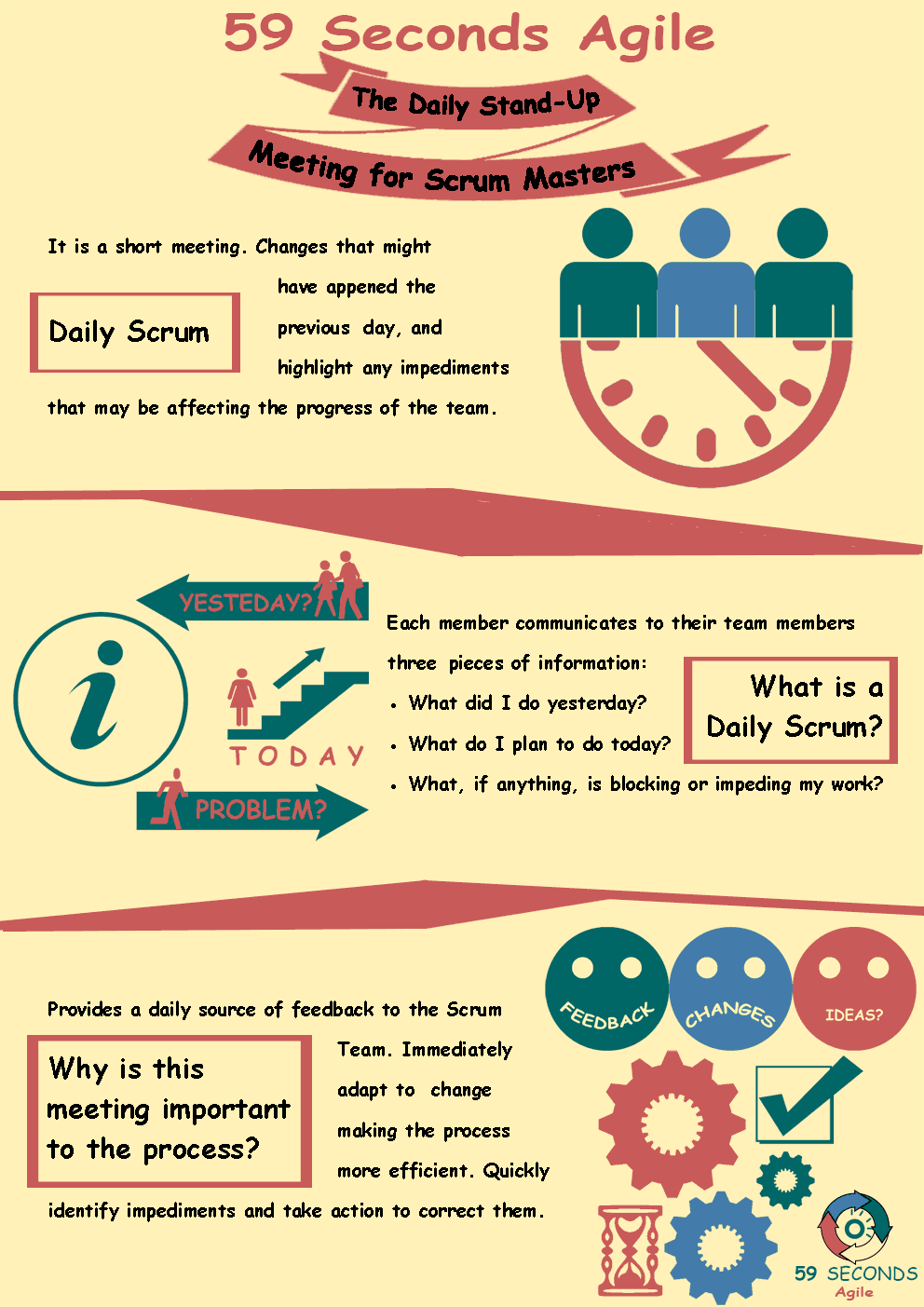The Agile Daily Stand-Up
A 59 Seconds Agile Training Video
This is an ‘Agile Daily Stand-Up’ training video.
Continue to Part 5
The Agile Daily Stand-Up
A 59 Seconds Agile Article
This article provides an ‘Introduction to The Agile Daily Stand-Up‘ and looks to discuss what the Daily Stand-Up is, the format of the meeting and the benefits of the Daily Scrum.
Status Update Meetings
You may have experienced status update meetings before, and they lasted much longer than fifteen minutes, even with someone to facilitate the meeting. Your previous meetings ended with everyone still confused about what was going on and feeling like they just wasted their time.
In the daily scrum meetings, the scrum master is the person who makes sure that the meeting stays short and serves its very specific purpose. While the entire development team is required to go to the meetings, the scrum master serves as the facilitator. They make sure that each person answers these three questions: what they did yesterday, what they are planning to do today, and if they have run into any impediments.
It’s important to note that the scrum master makes sure that the daily scrum meeting doesn’t turn into a problem-solving meeting; rather, it’s an opportunity to raise issues to be solved later. Instead, the scrum master can hold a follow-up meeting directly after the daily scrum with the people who are involved with the impediment to clear it up as quickly as possible.
The scrum master can also keep the meeting moving by passing an object around at random to indicate whose turn it is to talk. If none of the team members know when they’ll be called on to speak, they’ll be more likely to focus and pay attention to everyone else’s report. Creating an atmosphere of efficiency accelerates the delivery of value.
Continue Reading —> Next
User Stories Applied
A 59 Seconds Agile Book Review
User Stories Applied by Mike Cohn is one of our favourite books on Agile User Stories. The book starts with an overview into user stories, and details what a user story is and the different aspects of them. He then discusses how to go about writing a user story, and provides details of the INVEST criteria that can be used to determine if the story is meeting all of its objectives. Next Mike gives an in depth discussion of who user stories are written for and where to begin when gathering the details for them. The book then discusses acceptance testing user stories, including how to go about specifying these criteria and the responsibilities of the development team and customers during this process.
Continue Reading —> Next
The Agile Daily Stand-Up Meeting
A 59 Seconds Agile Video Animation
Continue Reading —> Next
The Daily Stand-Up Meeting
A 59 Seconds Agile Infographic

Continue Reading —> Next
Agile Scrum Master Training Course
Our Favourite Agile Books
We found these books great for finding out more information on Agile Scrum:
Continue Reading —> Next


